#Luigi Villoresi
Explore tagged Tumblr posts
Text


LUIGI VILLORESI and ALBERTO ASCARI, 1953
#this sport has always been silly#the silliness has always been there#i gotta love that :)#classic f1#f1#formula 1#1950s#luigi villoresi#alberto ascari
16 notes
·
View notes
Text

La Ferrari 553 Squalo Ferrari 554 2.5 L4 N°38 de Mike Hawthorn - Scuderia Ferrari & la Lancia D50 Lancia DS50 2.5 V8 N°36 de Luigi Villoresi - Scuderia Lancia - Grand Prix d'Espagne - Pedralbes 1954. - source F1 Old and New.
45 notes
·
View notes
Text
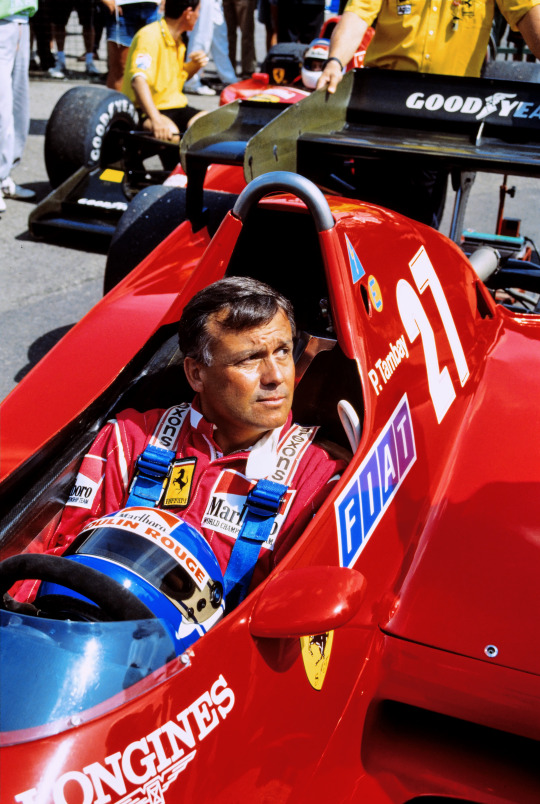
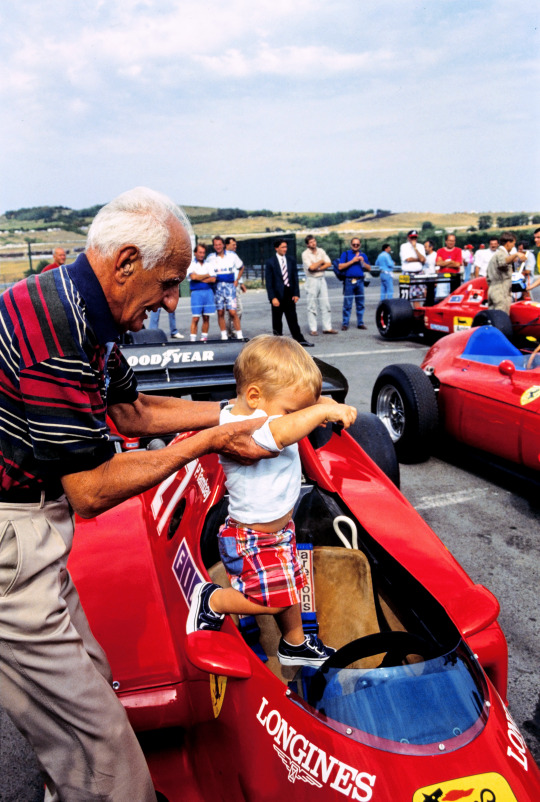

HUNGARY, 1992 — At the celebration for Scuderia Ferrari's 500th race in Formula One, 2x race winner Patrick Tambay suits up for the Ferrari 126C3 he drove in the 1983 season. Luigi Villoresi, one of Ferrari's first drivers since the inception of Formula One, lifts Patrick's son, Adrien, into the cockpit of his father's 1983 Ferrari 123C3. (Photo by Ercole Colombo)
#f1#scuderia ferrari#patrick tambay#luigi villoresi#adrien tambay#la famiglia#ferrari history#patrick passed away last year#gigi passed in 1997...five years after this photo#adrien is a racing driver#he's raced in gp3 gt categories and dtm#still is a fe test driver and works with canal as an f1 consultant!#anyways. ferrari generations....#*ph#*m#*ferrari#1992#hungarian gp 1992#1990s#save#stories#ph: ercole colombo#one of my all time favorite photographers fr#you can just see the resemblance between patrick and adrien#he has such an eye for human moments#when it comes to ferrari <3#anyways isn't it crazy that ferrari reached twice that amount of grand prix in less than 30 years?
28 notes
·
View notes
Text

18 notes
·
View notes
Text
Swiss GP 1950: grand prix #4 in Formula 1 history
When racing in Switzerland still was a thing, Bremgarten was the place where the fourth round of 1950 season happened, on 4th June, but could be considered the third somehow, as in Indianapolis none of the usual teams or drivers entered the race. Alfa Romeo took the top-3 in qualifying with Juan Manuel Fangio, Nino Farina and Luigi Fagioli, followed by Ferrari cars of Luigi Villoresi and Alberto Ascari. Some Talbot-Lago and Maserati were well ahead of a third Ferrari, driven by Raymond Sommer.
All the three Ferraris were forced to retired due to technical reasons, with Ascari the first one, after attempting at the beginning to fight with the Alfas and ending up at some point in third behind Fangio and Farina but ahead of Fagioli. Fangio, at the beginning in the lead and later in second place behind team-mate Farina, was forced to retire too and Alfa Romeo managed to take "just" a 1/2 finish with Farina and Fagioli. Talbot-Lago took a podium with third place from Louis Rosier, while Prince Bira and Felice Bonetto, both Maserati drivers, took the last two scoring positions, fourth and fifth.
#1950's f1#f1 1950#swiss gp#nino farina#luigi fagioli#louis rosier#prince bira#felice bonetto#juan manuel fangio#alberto ascari#luigi villoresi#raymond sommer#alfa romeo#ferrari#maserati#classic f1#retro f1#vintage f1
2 notes
·
View notes
Text
The 1948 Circuito del Garda
Here is the grid for the Grand Prix field for the Lake Garda race at the town of Salò not far north from Brescia which took place on October 24, 1948. It was the first such race at Garda since 1927. On pole in car n. 6, a supercharged Ferrari 125C, is Giuseppe “Nino” Farina while next to him is Ferrari customer Bruno Sterzi with his Ferrari, probably a more normal 166F2 with the single camshaft…

View On WordPress
2 notes
·
View notes
Text
Interesting facts I learnt about Maria Teresa de Fillippis & Lella Lombardi from Motorsports Magazine: Italian Legends

Maria Teresa de Fillippis:
She originally started off racing horses
Her first car was a Fiat 500 which she raced when her brothers bet she couldn't be a fast driver
She won her first ever race in the Fiat
Her father inspired her to succeed in whatever she did and supported her racing, Her mum didn't object either as she was happy that Maria was winning
She never had any sponsors or managers as she came from a wealthy family and made her own decisions, took no orders.
She never raced for Ferrari because she didn't want Enzo Ferrari to try and control her - Maserati respected this
Fangio told her she drove too fast and needed to go slower
Fangio, Ascari & Villoresi were her hero's and they were always very good to her
On track she called Fangio her 'Race Father' because he treated her so well and she admired that
"The relationships within the team were influenced by the older drivers. They were all older than me so they would protect me from anything like that (people trying to romance her at the track) I could look after myself, you know, and when things became too intense or too vulgar then I would joke with them, make fun of them, and they would go away"
She was once courted by Luigi Musso
"She was admired not only for her beauty but her courage in a racing car. She had guts, and was respected by her fellow competitors. I thought it was absolutely great she was in Grand Prix racing"- Tony Brooks
Monaco was tough on her at the corners
She was known as 'pilotino' because she was the smallest person racing
A car was made for her but had so many delays that neither her, Hans Herrmann nor Wolfgang von Trips could get the car on the grid during qualifying. Stirling Moss advised her to not race that car anymore
She was due to race the car at AVUS but gave the car up to Jean Behra who's car it originally was and was without a car. He was killed at that race
After this De Filippis left the sport to focus on having a family and didn't return until 1973 to join the International des Anciens Pilotes de Grand Prix F1 club
She became the club's vice president in 1997 and made honorary president days before celebrating her 85th birthday

Lella Lombardi:
Robin Herd says the Nurburgring was Lella's best driver, not the time when she got half a point
She started off with Monzo-based Formula 875
Her partners name was Fiorenza
She did well in F3 and became Italian's Ford Escort Mexico Challenge Champion the same year, 1973
Jackie Epsteine ran a Formula 5000 team in the winter of 73 and was persuaded to let Lella try, and became impressed with her driving and technical knowledge like when she correctly pitted when realising the car was getting a puncture
She was nicknamed 'Tigress of Turin' though the place name is wrong
She had little trouble getting sponsors. She stayed in Italy and flew to each race and never asked for expenses.
"She was charming but stubborn and independent, and a tremendously careful road driver. I went with her from Snetterton to Norwich once: 30mph all the way. Painful. People were staring and peeping. She didn't care"
"She wasn't interested in fashion and usually wore trousers if she was in civvies. She had an image to keep; "I'm tough so don't mess with me" She was a loner, really. No entourage. She never brought a girlfriend"
"Her sex and sexuality were not topics of conversation in the paddock. She was judged purely as a racing driver"
"She wasn't a publicity seeker. BBC news came to her first test with us at Goodwood and she wanted to know why. That she was a woman was irrelevancy to Lella. She was a racing driver first and foremost" - Robin Herd
Lella would complain that her car was understeering badly in corners but Vittorio who tested the car out said it was fine. Only next year when Ronnie Peterson described the same handling with the car did they realise Lella had been correct
With Ronnie Person joining Lella was unfortunately let go from March
"Lella was the perfect co-driver. She was much more concerned by the settings than I was, great with the mechanics and very speedy. But she wanted me to be just as fast and was always giving me tips and help. She was passionate about racing. She was no interested in music, reading, culture or anything else. Just racing - and fishing" - Christine Beckers
"When asked in a press conference how she was coping with such a hefty car, she replied, "I don't have to carry it, I just have to drive it"
Lella felt she could have been rich and famous in America but her love for Italy made her stay there
She knew foreign people appreciated her but she wanted to be know in Italy
Lella knew of her breath cancer by 1985. She had hit her breast on a sailing trip and it hurt her a lot.
With her partner Fiorenza she was trying to create a team and find others to help her including Giusy Remondi
She used to sleep in her truck to save money for racing
"She and Fiorenza were a beautiful couple, reserved; the spotlight was never on them"
"Lella only complained about the inequality in Formula 1 - because nobody had listened to her about the changes for the car"
"On her deathbed she asked us to continue the team to preserve what she had achieved. We miss her passion, determination and modesty"
Lombardi checked into Milan's san Camillo Clinic in February 1992 and died on March 3rd, days short of her 51st Birthday
114 notes
·
View notes
Text
Parma – Poggio di Berceto 2023

Torna una delle gare di regolarità più antiche della penisola, infatti l'edizione 2023 della Parma-Poggio di Berceto si svolgerà nel fine settimana del 23 e 24 settembre, l'organizzazione, a cura della Scuderia Parma Auto Storiche, ha ideato un ricco programma. Nella mattinata di sabato 23 settembre, quando presso la Rocca di Sala Baganza (PR) si effettueranno le verifiche tecniche e sportive e al termine gli equipaggi saranno presentati al pubblico. Alle 14.01 prenderà il via il Circuito di Parma - Trofeo Fontana, con 40 prove di regolarità, che porterà i concorrenti da Sala Baganza a Fornovo di Taro per poi ritornare ancora al punto di partenza. Domenica il via della gara vera e propria sarà dato dal Teatro Regio di Parma, mentre la competizione consentirà ai partecipanti di ripercorrere il tracciato della leggendaria corsa in salita, dove si attraverseranno i comuni di Parma, Collecchio, Sala Baganza, Boschi di Carrega, Talignano, Gaiano, Fornovo di Taro, Terenzo, Cassio, Berceto e ritorno, per un totale di 140 km e 40 prove cronometrate, parzialmente concatenate. Oltre alla gara di regolarità la Parma-Poggio di Berceto 2023 vede anche un importante concorso di eleganza in forma dinamica. È del 1913 la prima edizione della gara disputata sul percorso della Parma-Poggio di Berceto, che iniziò il suo Albo d’Oro con i nomi di Giovanni Marsaglia e dell’Aquila Italiana e l’idea di disputare una corsa automobilistica, da inserire nei festeggiamenti per il centenario verdiano, che si teneva nel settembre di quell’anno, fu di un gruppo di pionieri dello sport motoristico parmense riuniti nella Società Pro Parma. Nel corso della storia della gara, si sono disputate ventuno edizioni di velocità, quindici dal 1913 al 1955, sul tratto Parma-Poggio di Berceto e sei edizioni, dal 1962 al 1975, sul tratto Fornovo-Monte Cassio con piloti di fama internazionale quali Giuseppe Campari, Antonio Ascari, Luigi Villoresi ed Enzo Ferrari che nel 1919, poco più che ventenne, scelse la Parma-Poggio di Berceto come esordio nel mondo delle competizioni, al volante di una CMN, arrivò undicesimo assoluto e quarto di Categoria, mentre vinse Antonio Ascari su Fiat in 38’ 11” 1/5, alla media di km 83,275. Alla gara sono ammesse le vetture costruite fino al 1981 con alcune eccezioni, come tutta la produzione di Alfa Romeo Brera, Alfa Romeo Duetto, Ferrari e modelli sportivi di Porsche. Read the full article
0 notes
Text



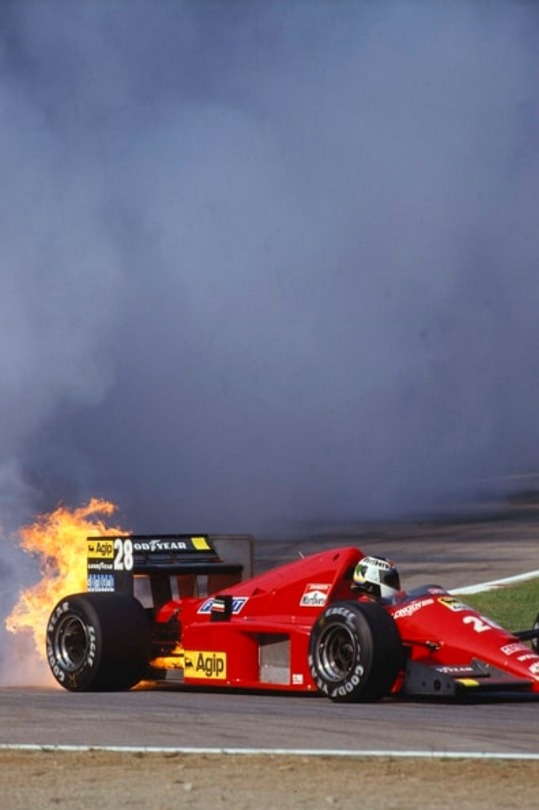
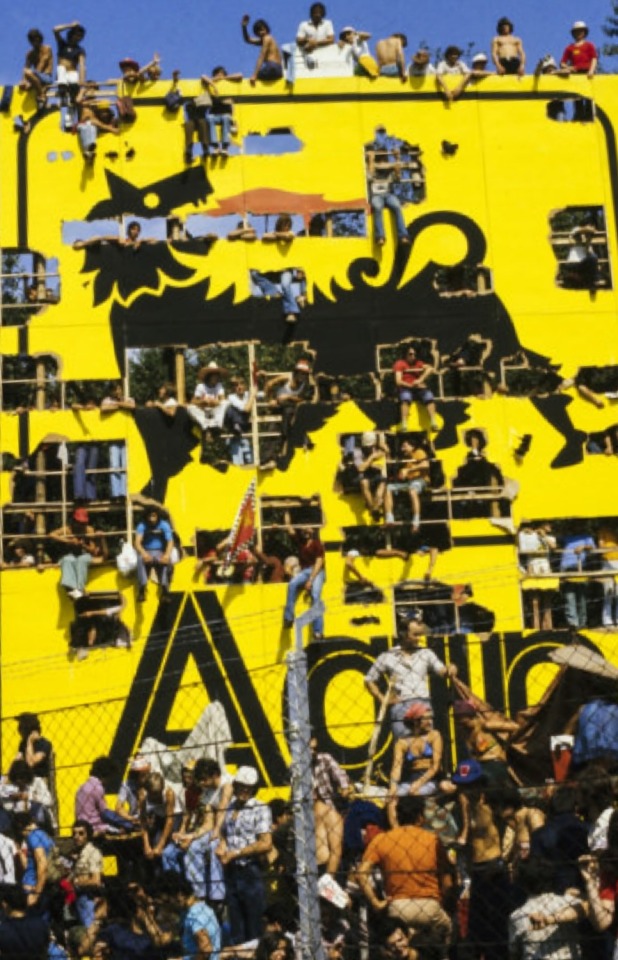




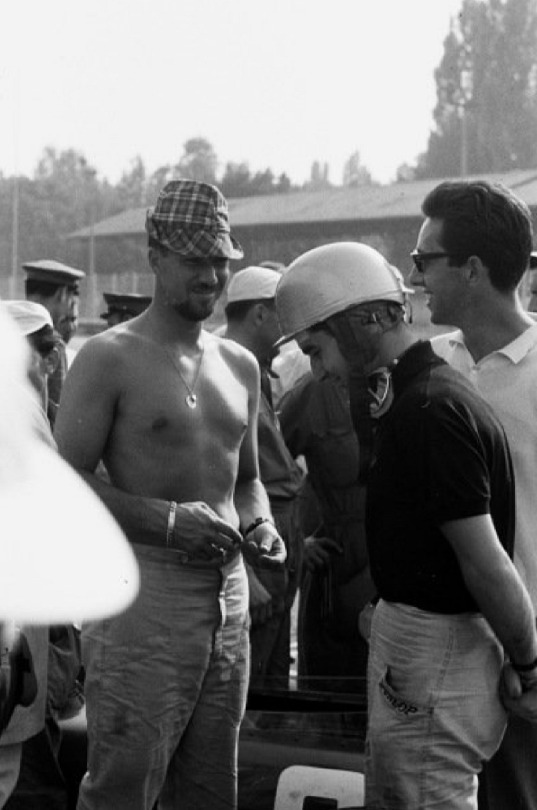
We are racing at Monza today!!! leeet's make it v i n t a g e ✨
#it feels so good to be home ✨#ferrari#luigi villoresi#arturo merziario#stefan johansson#jim clark#jackie stewart#graham hill#dan gurney#giuseppe farina#jody scheckter#michael schumacher#jo bonnier#lorenzo bandini#mauro forghieri#classic f1#f1#formula 1#retro f1#f1 1950s#f1 1960s#f1 1970s#f1 1980s#f1 1990s#historical _race_circuits
74 notes
·
View notes
Photo





monaco grand prix - may 21, 1950 1. juan manuel fangio (alfa romeo 158) leads bob gerard (era a) 2. luigi villoresi (ferrari 125) 3. pilot unknown 4. harry schell (cooper t12) 5. luigi villoresi (ferrari 125) 📷 lat photographic / motorsport images
#f1#formula 1#vintage f1#classic f1#juan manuel fangio#luigi villoresi#harry schell#scuderia ferrari#ferrari f1#historical f1
2 notes
·
View notes
Photo

Modena 1952 - Ascari, Villoresi, Farina
4 notes
·
View notes
Photo





Ferrari 195 Inter Ghia Coupé 1951 ''ex Villoresi''. - source Ruote da Sogno.
102 notes
·
View notes
Photo

Alberto Ascari, Luigi Villoresi and Mike Hawthorn (Ferrari 500:s) at the Grand Prix de France in 1953.
#Alberto Ascari#Luigi Villoresi#Mike Hawthorn#Ferrari#Ferrari 500#Grand Prix de France#French Grand Prix#1953#F1#Formula One#Formula 1#Grand Prix
107 notes
·
View notes
Text
Belgian GP 1950: Grand Prix #5 in Formula 1 history
In a only 14 cars grid, on 18 June 1950, three Alfa Romeo were starting from the first three positions as usual. Poleman was Nino Farina, followed by team-mates Juan Manuel Fangio and Luigi Fagioli, with Fangio who took the lead in the first stages of the race, to stay in the lead except at the moment in which he had a pitstop - all the Alfa stopped at some point.
Farina was second until he suffered some technical issues and dropped to fourth in the closing stages of the grand prix and Fagioli was promoted to p2. The last step of the podium went to Louis Rosier, Talbot-Lago driver, who already finished on the podium in the previous Swiss GP. It was the last time he was on a podium in Formula 1.
Ferrari, which entered with two cars driven by Alberto Ascari and Luigi Villoresi, ended up in p5 and p6, with Ascari the only of the two in the points as only the first five finishers scored points back in the days. They were ahead of the others finishers Talbot-Lago, the French team being hugely represented on the grid with half of the cars.
#1950's f1#f1 1950#belgian gp#alfa romeo#ferrari#talbot lago#nino farina#juan manuel fangio#luigi fagioli#alberto ascari#luigi villoresi#louis rosier#classic f1#retro f1#vintage f1
1 note
·
View note
Text
The Italian Grand Prix
This is the Italian Grand Prix at Monza on September 7, 1952. Leading here is Luigi “Gigi” Villoresi, the mentor of Alberto Ascari, with his Ferrari 500F2. Behind Farina holding a four wheel drift is his teammate Ascari, who would be the year’s Champion with another Ferrari 500F2. The two cars are in the second of the right hand Lesmo corners on the back of the circuit. Both cars had the…
#Alberto Ascari#Aurelio Lampredi#f1 photographs#Ferrari#Froilan Gonzalez#grand prix photographs#Italian Grand Prix#Luigi Villoresi#Monza#Nino Fariana#Nino Farina
0 notes